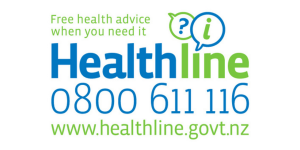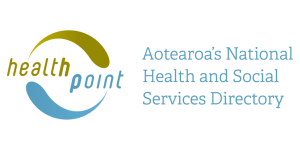Medicines to treat eczema
Eczema is also known as atopic eczema or atopic dermatitis
Key points about medicines for atopic eczema
- Managing atopic eczema involves caring for your skin every day to help control and reduce symptoms and prevent flare-ups and complications.
- This includes moisturising regularly with emollients to keep your skin hydrated and reduce dryness.
- You may also be prescribed creams or ointments, such as topical corticosteroids, during flare-ups or as part of a maintenance plan.
- Learn more about medicines for atopic eczema.
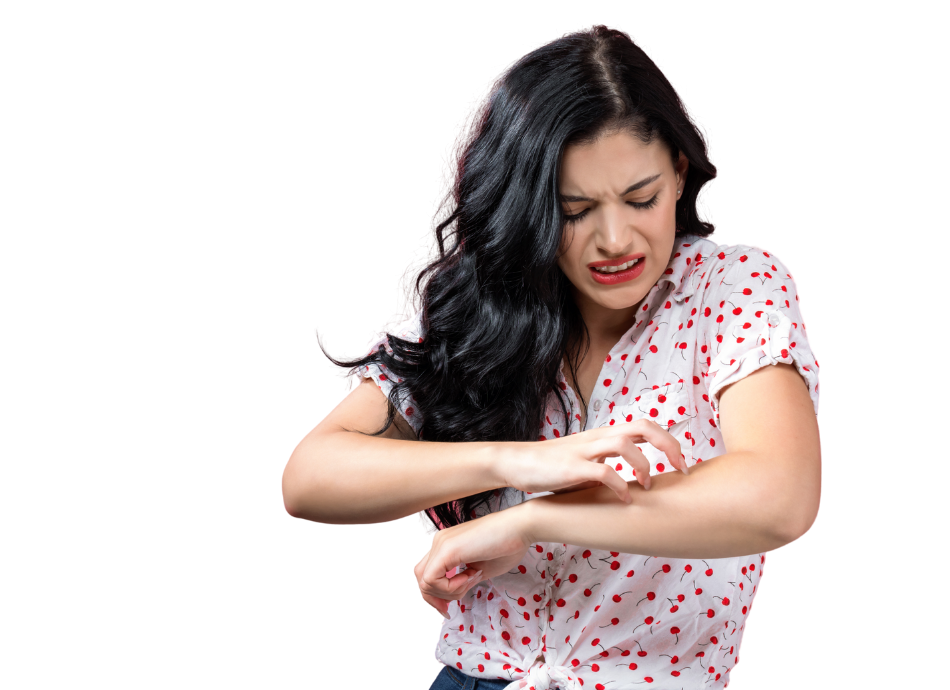
Atopic eczema, also called atopic dermatitis, is a very common skin condition that causes your skin to be dry, itchy and red (inflamed).
- 'Atopic' is a term used to describe a group of conditions including asthma, eczema and allergies such as hay fever. Atopic eczema is more common if you have one of these conditions or a family member is affected with one.
- Although atopic eczema most frequently occurs in babies and children, it can also occur when you're an adult. Many children 'grow out' of atopic eczema, but it can return years later.
- Read more about eczema and eczema in children.
The goal of eczema treatment is to control and reduce symptoms such as itching, redness and inflammation, and to prevent flare-ups and complications such as infection.
- Moisturisers or emollients: Treating atopic eczema involves looking after your skin with self-care including once-daily bathing or showering and the regular use of moisturisers or emollients.
- Other creams and ointments: For people with mild to moderate eczema, treatment may also include the use of creams and ointments (called topical treatments) such as steroids, or specialist medicines, pimecrolimus or tacrolimus.
- Disease-modifying medicines or biologics: For people with severe atopic eczema, disease-modifying medicines or biologics such as methotrexate, azathioprine, ciclosporin, mycophenolate, or upadacitinib may be prescribed. They're used for eczema that hasn't responded to topical treatments.
- Flare-ups: During severe eczema flares, treatment may include steroid tablets to reduce inflammation, along with supportive care like wet wraps and cold compresses to soothe the skin and promote healing. Steroid tablets such as prednisone are used for a short time, when symptoms are worse and don't improve with other treatments.
- Skin infections: People with eczema are more prone to skin infections because the damaged skin barrier makes it easier for bacteria to enter and cause problems. Antibiotics aren’t usually used for eczema itself, since it’s not caused by bacteria. But if the skin gets infected, often from scratching, antibiotics may be needed. After the infection is cleared, treatment goes back to managing eczema with moisturizers and steroid creams. If infections keep happening, your healthcare provider may suggest using antiseptic cleansers regularly.
- Antihistamines aren't usually used to treat atopic eczema. However, if there's a lot of itching, a non-drowsy antihistamine may help. A drowsy (sedating) antihistamine can be considered if itching is making it hard to sleep.
Follow your eczema action plan
Together you and your healthcare provider will create an eczema action plan to help you manage your symptoms. Your plan will explain how to control your eczema long term and what to do when you’re having a flare up. Here is an example of an eczema action plan(external link).
People with eczema have very dry skin in general. When the skin is dry or inflamed, it's more easily affected by bacteria and allergens, which can make eczema symptoms worse. Itch is the main symptom of eczema. People often scratch their skin because of the itch, which can be moderate to severe and often worse at night. Skin may also be dry, inflamed and cracked. Moisturisers help protect the outer layer of the skin, keep the skin hydrated and help to prevent itch. Use colour and fragrance-free products.
There are 3 ways to use emollients:
- Leave-on emollients are left on your skin once applied.
- Soap substitutes are used instead of soap and must be washed off your skin a few minutes after application.
- Bath additives are also called bath emollients. They're added to bath water and are thought to leave a film of oil over the skin.
Taking a bath or shower is helpful for eczema. It helps remove potential irritants from your skin (dust, pollen, etc.). It's best to bathe with lukewarm water for a short period of time and then apply moisturiser immediately after getting out of the shower or bath. This prevents the skin from drying out.
Read more about emollients and moisturisers.
Steroid ointments, creams and lotions are also called topical steroids. They're used to reduce inflammation, itch and redness. There are many types and brands of topical steroids available in Aotearoa New Zealand. Topical steroids are available in different preparations – ointments, creams and lotions.
Steroid selection depends on eczema severity and body location
The type of steroid prescribed for eczema varies depending on the severity of your eczema and the location on your body. You may be prescribed different products for different areas.
Topical steroids have varying potency (strength) and are generally grouped into 4 categories depending on their strength – mild, moderately potent, potent and very potent.
- Your healthcare provider will decide on the correct strength for you depending on your condition, age and the area of your body being treated.
- Stronger products are more likely to cause side effects, so it’s important to use potent steroids for the shortest possible time.
- Topical steroids are absorbed at different rates from different parts of your body. There's much greater absorption where your skin is thin (eg, eyelids, genitals and skin creases) compared to thicker skinned areas (eg, palms of your hands and soles of your feet).
The correct one to use depends on the location on your body.
- Ointments tend to be greasy and are usually best to treat areas of skin that are dry or thickened. They have the lowest chance of burning and stinging when applied.
- Creams are usually best to treat moist areas of skin, and they absorb into the skin well.
- Lotions are easy to apply and may be useful to treat hairy areas such as your scalp.
- Read more about steroid creams, lotions and ointments.
Ongoing use of topical steroids
- Once the redness, inflammation and itching have settled, you can stop using the topical corticosteroid. Keep your skin moisturised by continuing to use emollients regularly. If the redness and itching haven't settled after 2 weeks, ask your healthcare provider for advice.
- If your eczema flares up again, you can restart the topical corticosteroid for a short time.
- To help prevent flare-ups, your healthcare provider may advise you to use the corticosteroid twice a week on areas where eczema has been, even if the skin looks better. This is called maintenance treatment and can help keep your symptoms under control.
Pimecrolimus and tacrolimus are called topical immunomodulators. They're specialist medicines and work in a different way from corticosteroids to suppress your immune system and control inflammation, redness and itching. They belong to a group of medicines called calcineurin inhibitors. They work by adjusting the immune response, blocking certain chemicals in the skin that trigger atopic eczema.
Pimecrolimus and tacrolimus are suitable for treating atopic dermatitis in sensitive sites such as the eyelids, face, skin folds, and genital areas.
- Pimecrolimus (also called Elidel) is available as a cream and is used for mild to moderate eczema. Read more about pimecrolimus.
- Tacrolimus (also called Zematop) is available as an ointment and is used for moderate to severe eczema. Read more about tacrolimus.
They're applied twice daily for up to 6 weeks to treat eczema flares and can also be used twice a week on an ongoing basis to help prevent flares. It's important to protect yourself from the sun while using these medicines.
Eczema flares are periods when the symptoms of eczema such as itching, redness, and inflammation suddenly worsen. This may be due to triggers like allergens, stress, or irritants.
Steroid tablets
- A short course of steroid tablets such as prednisone can be helpful for quickly managing a flare and providing temporary relief. However, long-term use is not recommended because of the risk of side effects such as osteoporosis and cataracts.
- Keep using both your corticosteroid cream and your moisturiser (emollient) as directed. They work together to reduce inflammation, relieve symptoms, and protect your skin.
Cold compresses
- A cold compress is a cloth soaked in cold water and applied to the skin to help soothe itching, reduce inflammation, and relieve discomfort. Cold compresses can help by numbing the area slightly to reduce the urge to scratch and reduces swelling and redness. Soak a clean cloth in cold water, squeeze it out, and place it on the itchy area for 5 to 10 minutes. Repeat as needed throughout the day.
Wet wraps
- Wet wraps are damp bandages or clothing applied over moisturisers or steroid creams to help soothe eczema, improve skin hydration, and reduce inflammation.
- They help by cooling and calming the skin, enhancing the absorption of moisturisers or steroid creams and protecting the skin from scratching.
- Your healthcare provider will give you guidance on how to apply wet wraps. It involves applying a generous layer of moisturiser or prescribed cream to the affected skin and covering the area with a damp layer of bandages or clothing. This is followed by a dry layer on top and left on for a few hours or overnight as advised.
For people with severe atopic eczema who have frequent flares of their symptoms, disease-modifying medicines or biologics such as methotrexate, azathioprine, ciclosporin, mycophenolate, or upadacitinib may be prescribed. They're used for eczema that hasn't responded to topical treatments.
While taking these medicines you'll need to have regular tests and monitoring to look for possible side effects and assess how well the medicine is working. Learn more about:
In Aotearoa New Zealand upadacitinib is funded under a Special Authority, for people who meet certain criteria. A special authority means your specialist will need to make an application to Pharmac (the government medicine funding agency) for approval before the medicine can be funded for you.
People with eczema are more prone to skin infections because the damaged skin barrier makes it easier for bacteria to enter and cause problems.
Antibiotics
Antibiotics are not routinely used to treat eczema, but they may be needed if there's a bacterial infection. Eczema itself isn’t caused by bacteria, so antibiotics don’t treat the condition directly. However, eczema can become infected, especially if the skin is broken from scratching, and a course of antibiotics is needed. Once the infection is treated, the focus returns to managing the eczema with moisturisers, topical steroids, and other usual treatments.
Antiseptic skin cleanser
If recurrent skin infections are an issue, your healthcare provider may recommend a regular use of antiseptic skin cleansers. They're used as soap substitutes for body and hair wash. Here are a few examples.
- Twice weekly bleach bath: Use diluted bleach (sodium hypochlorite) and follow bleach bath instructions. If there's no bathtub, dilute bleach in a bucket by following bleach bath instructions and use the water to wash the body for 10 minutes.
- Chlorhexidine gluconate 4% solution: Leave on skin for at least 1 minute before washing off.
- Octenidine (Octenisan): Leave on skin for at least 1 minute before washing off. It's a useful alternative for patients with sensitive or fragile skin, or for those who cannot tolerate chlorhexidine.
Atopic eczema(external link) DermNet, NZ
Childhood eczema(external link) KidsHealth, NZ
Eczema and allergies(external link) Allergy NZ
Eczema and food – fast facts(external link) Australasian Society of Clinical Immunology and Allergy, ASCIA, 2020
Action plans
Eczema action plan(external link) The Eczema Association of New Zealand
Eczema action plan(external link) Australasian Society Clinical Immunology & Allergy, 2024
Apps
Brochures
Brush on your eczema basics(external link) The Eczema Association of New Zealand
Spring skin tips(external link) The Eczema Association of New Zealand
Summer skin tips(external link) The Eczema Association of New Zealand
Autumn skin tips(external link) The Eczema Association of New Zealand
Winter skin tips(external link) The Eczema Association of New Zealand
Eczema (Atopic Dermatitis) Frequently Asked Questions(external link) ASCIA, Australia, 2024
Bleach baths for eczema(external link) New Zealand Child & Youth Clinical Network, 2025
Infected eczema(external link) Diana Purvis – Paediatric Dermatologist
Eczema(external link) Health Literacy NZ
See our pages Eczema for healthcare providers and Long-term conditions for healthcare providers.
Apps
What is the best treatment for eczema?
The best treatment for eczema is daily skin care that includes regular application of moisturisers (also called emollients), to keep your skin hydrated and reduce dryness. Other treatments will depend on the severity of your symptoms, age and trigger factors and may include steroids applied to the skin, pimecrolimus and tacrolimus and disease-modifying medicines or biologics.
Which over-the-counter eczema creams can I buy in New Zealand?
You can buy moisturisers (also called emollients) to keep your skin hydrated and reduce dryness.
You can also buy hydrocortisone 0.5% cream over the counter in Aotearoa New Zealand. This is used to treat mild skin conditions or eczema on certain areas such as your face. It's also used for skin conditions in younger children such as inflammation (redness) associated with nappy rash or mild atopic eczema. It's best to talk to a pharmacist to make sure it's the best option for you and how long to use it for, especially if it's for a child. A pharmacist can also provide a higher strength (hydrocortisone 1%) – they will need to ask you some questions first to make sure it's best for you. Read more about steroid creams, lotions and ointments.
Brochures
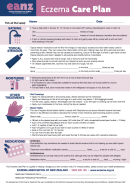
Eczema care plan
Eczema Association of New Zealand, 2022
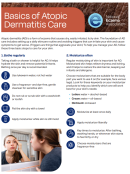
Basics of Atopic Dermatitis Care
National Eczema Association, USA
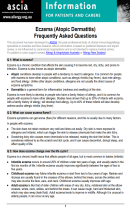
Eczema (Atopic Dermatitis) Frequently Asked Questions
ASCIA, Australia, 2024
Credits: Sandra Ponen, Pharmacist, Healthify He Puna Waiora. Healthify is brought to you by Health Navigator Charitable Trust.
Reviewed by: Angela Lambie, Pharmacist, Auckland
Last reviewed:
Page last updated:


